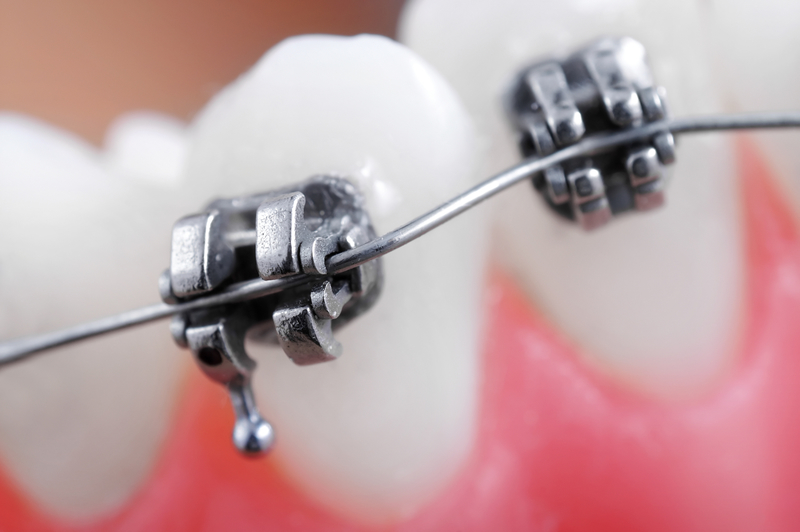Our Blog
Orthodontic Treatment Before the Year 2000

It’s the year 2018 and a lot has changed in every field of medicine since the year 2000. Orthodontics is no exception, and there are always new advances in how your teeth are straightened and cared for. There are many braces options available to patients that were not available in years past. However, some services—such as Invisalign—have been around longer than you might think. Find out when different orthodontic practices and services were available to patients and how orthodontic treatment looked before the year 2000.
How Old Is Orthodontic Treatment?
Many people think that orthodontic treatment is fairly new. However, people have been straightening their teeth for many centuries. Their methods were simply much cruder than the braces and orthodontic appliances you know today. Many mummies from Ancient Egypt have been found wearing orthodontic appliances to straighten their teeth. Ancient Greeks, Romans and the Etruscans have also been found with various types of “braces” and other mouth appliances.
To give you an idea of how long orthodontic treatment has been around, writings by Hippocrates (a Greek physician) have been found about the subject from 400 b.c. Even back then people were concerned about crooked teeth and how they looked. However, there weren’t very good methods for straightening the teeth, so there weren’t many advances in orthodontics until just a few centuries and decades ago.

Past Orthodontic Methods
People centuries ago did not have the best methods for straightening teeth. However, over the centuries, many people made advances or tried various methods such as the following:
- Ancient Egyptians used metal parts and wires to try to straighten the teeth, as has been seen on mummies.
- Celsus, a Roman writer from around 1 A.D., wrote about trying to straighten your teeth by pushing them into place.
- Several years later, a Roman named Pliny recommended filing your teeth down if you wanted them a certain size.
- Pierre Fauchard was born in 1728, and through his various methods and research in straightening teeth, is now considered the “Father of Dentistry”. One of the methods he tried on patients was forcefully pulling and moving the teeth into place with forceps. He would then tie those moved teeth to others so they could heal back into the mouth again.
- Dental impressions began in the 17th century by Matthaeus Gottfried Purmann. Impressions make models of the teeth, and this method was so successful that impressions are still used today.
- In the United States, barbers and medical doctors often pulled infected teeth and performed orthodontic treatment. The treatment varied from person to person and generally involved pulling teeth without numbing medicine.
- J.S. Gunnell invented a form of headgear in 1822 that was successful in straightening the teeth. However, that headgear was large and fastened to the jaw outside the mouth and pushed on the teeth.
- Before 1970, professionals in orthodontics wrapped wires around each tooth, anchoring them with a bracket on each tooth. This method required a lot of metal in the mouth.

Modern Braces and Appliances
Modern orthodontic treatment is very straightforward and easy. Orthodontics has advanced so much that people can even straighten their teeth without any visible signs that they are doing so. When you think of braces, you probably think of the metal brackets and wires that so many wear. Traditional metal braces consist of a metal bracket attached to each tooth with a metal wire going through the bracket. This orthodontic treatment method mimics past metal treatments that were done throughout the centuries. However, the brackets and wires take up minimal space in the mouth and gently straighten the teeth.
Ceramic braces are another modern option for patients that are most similar to metal braces. They involve the same look and design, except they are made from white, ceramic material. Even the archwire can be made white for a patient. Lingual braces also use a metal bracket and wire design, except that they are attached to the back of a patient’s teeth. These were created in 1976 and provided patients with a way to straighten their teeth without visible brackets on their teeth.
Invisalign is the most incognito way to straighten your teeth. Created in 1997, this orthodontic treatment consists of transparent aligners that are switched out each week. A patient will wear the aligners 20-22 hours a day with the freedom to remove them for eating, drinking, sports, playing instruments and more. In about the same time as traditional metal braces (sometimes less), patients can get straight teeth. This is an amazing option, as any teen or adult can straighten their teeth without others knowing.
Orthodontic Treatment Today
Many advances in dentistry happened around 1970 and later. This is when the design of metal braces was perfected to what we know it to be now. The future will surely hold many more advances in orthodontic treatment as the years go by. No matter what type of appliance is available or what you choose to have, we recommend straightening your teeth. Not only can it significantly reduce your risk for tooth decay and gum disease, but straighter teeth can raise your confidence and help you be more successful. To have your free braces consultation, call Belmar Orthodontics today at (303) 225-9016!

